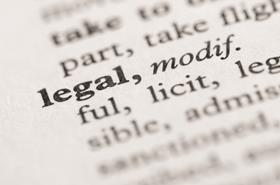A clearer picture is starting to emerge on liability for combustible cladding

Evidence from the first phase of the Grenfell inquiry, which ended in December, has confirmed how quickly combustible cladding contributed to the spread of the fire. The external cladding was alight within 11 minutes of the kitchen fire starting, after the fire breached uPVC window fittings from inside the fourth-floor flat. As we learn more about the reasons why the fire spread so quickly, a clearer picture is emerging on what this means for developers, contractors and consultants associated with buildings that have combustible cladding.
Landlords and developers
Although progress has been made with replacing combustible cladding on social housing, remedial works to private blocks have been slow. The government is encouraging private landlords to pay for any repairs and threatening new measures if they fail to do so. In reality, the rate of repairs to private blocks will only rise once cost liability is confirmed.
Some repairs may be covered by insurance – many new homes benefit from major damage policies. The terms should be carefully reviewed and timescales for notifying claims followed. Policies should also be checked upon renewal for any new combustible cladding exclusions.
Claims are most likely where a contractual link exists, as claims in negligence may be too remote
The courts have now confirmed that landlords may share the costs of replacing combustible cladding with lessees through the service charge, but lessees may challenge the amount. However, landlords passing on costs to lessees should expect counterclaims from lessees, such as for breach of the landlord’s repairing obligations.
Whether such counterclaims will succeed depends on the terms of the lease and when the damage occurred. Under new leases, liability could be shared between multiple landlords. This means that developers who built a defective block but subsequently sold their interest could still find themselves liable.
Lessees could also bring claims under the Defective Premises Act 1972, which imposes duties on those involved in building and designing new dwellings, including duties to use proper materials and to see that a completed dwelling is fit for habitation. Duties do not arise simply through giving instructions or arranging for work to be done. A design and build contractor that has been appointed to design and carry out works does so independently from any instructions received.
Contractors and consultants
Landlords or developers could seek to recover remedial costs against those who installed or designed combustible cladding. Claims are most likely where a contractual link exists, as claims in negligence may be too remote to be recoverable. Contractors are under duties to carry out works in a proper and workmanlike manner and in compliance with statutory requirements. Installation of defective cladding potentially puts a contractor in breach of contract, so they may be liable for the repair costs.
It must be established as part of any claim against a contractor or consultant whether the installed works breached statutory requirements, but establishing that breach could be more difficult than anticipated. The �ڶ����� Regulations at the time when any defective cladding was installed were ambiguous and contradictory regarding the standards for buildings over 18m tall. Guidance is therefore awaited from the courts as to what this ambiguity means in practice and how it will impact on liability.
The inquiry must clarify in due course whether the defective cladding and insulation passed required safety tests and, if not, how this was allowed to happen. Although it is too early to answer these questions, it is clear the fire will have implications for the testing and labelling of construction materials.
Attention will also focus on those who certified as compliant buildings now known to contain combustible cladding. The contract administrator certifies completion under the building contract, and building inspectors sign off works against building control. Either may be liable if they failed to comply with their obligations, such as to inspect and/or test installed materials.
Conclusion
Claims against those who designed, installed or certified combustible cladding will be premature in advance of the conclusions of the second phase of the inquiry, which is not now expected to report until 2020. However, as a clearer picture emerges from the inquiry there are preliminary steps that can be taken now, such as gathering evidence and putting parties on notice of circumstances that could give rise to a claim.
Once published, the conclusions of the inquiry risk initiating a series of claims over who is responsible for the final repair bills. This may only further delay the removal of cladding now known to present a serious safety risk. The only way to prevent protracted litigation would be to introduce some form of compensation scheme to facilitate the remedial works. Only time will tell whether common sense will prevail.




























No comments yet